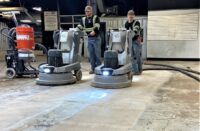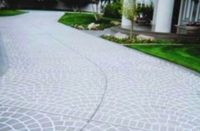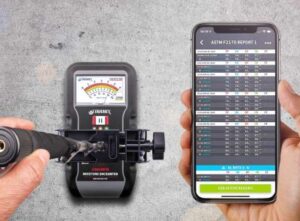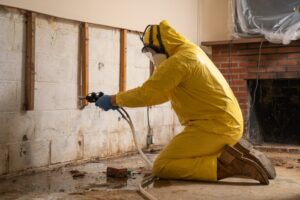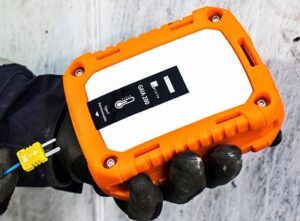
How valuable is 48 hours to you and your business? Can you put a price on it?
And does the price go up if you run into a moisture-related problem with a concrete slab in the later phases of a project?
These questions aren’t merely “academic,” of course, because moisture issues in a slab can lead to delays, callbacks and even flooring failures. However, relative humidity (RH) testing not only yields readings of the highest accuracy, but also does so in such a way that you may be able to effectively gain 48 hours’ worth of decision-making time as an inherent byproduct of the process.
When time is of the essence
Suppose you need an RH reading of 85 percent to proceed with applying finished product to a slab — but at 24 hours you’re getting a reading of 92 percent.
Currently, the ASTM F2170 Standard requires you to measure the RH and record it at 72 hours. But it certainly would be helpful if you didn’t have to wait the full 72 hours to confidently know what your RH measurement was going to be, wouldn’t it?
What if you knew, for example, that your 24-hour reading was a highly reliable indicator of what your 72-hour reading was going to be? This would give you 48 hours to come up with a reasonable solution to proceed if the RH percent reading were higher than your maximum moisture thresholds, or 48 hours to get the project labor and material in place if it were below, all prior to obtaining the final readings at 72 hours.
Well, one of the key findings of a soon-to-be released Precision and Bias (P&B) study that was conducted by an independent laboratory under the direction of an ASTM task group reveals that this is exactly the case with in situ RH testing. When using some manufacturers’ RH sensors, you don’t have to wait until the 72 hours have elapsed. You can take your RH measurement at 24 hours — a full 48 hours ahead of your final reading — and be reasonably certain that this is essentially the same number you will see at 72 hours.
ASTM’s P&B study
In the study, the laboratory tested six manufacturers’ RH products, taking temperature and RH readings at periods of 1, 2 and 4 hours and at 24, 48 and 72 hours.
The 24-hour readings for the tested RH sensors were essentially identical with the 72-hour readings. There was some slight variation, but it fell well within the acceptable range as laid out by the standard.
In other words, the test showed that when properly conducted tests were done in the field using some manufacturers’ RH sensors, users can confidently and soundly predict what the RH measurement at 72 hours will be, based on the 24-hour measurement.
Of course, you still need to take measurements at 72 hours to fulfill the standard’s requirements. But there is no longer a doubt about how long you must wait to get the necessary data to move forward on your project. Twenty-four hours gets you the information you need to make critical, timely business decisions.
Putting it to work in the field
So, how does this work in practice?
First, you would ideally have specific guidelines about RH testing and its requirements included as part of the project’s scope of work. This ensures that measurements are taken in a timely manner, that flooring issues are given the attention they need and that possible mitigation steps (should a problem arise) are at least already on the table.
Then, when your slab is ready, you drill your holes and place the appropriate number of sensors for the square footage in accordance with the ASTM F2170 Standard. Now, when you take your 24-hour readings, you’re in a position to evaluate how to move forward — even though you’re going to come back at the 72-hour mark to check and record your readings to comply with the standard. According to the study, you’re 48 hours ahead of the curve.
If your 24-hour readings are within the acceptable range for your finished flooring product, you know that you are going to be looking at essentially the same reading at the 72-hour mark. You have time to ensure that everything is in order and ready to go.
On the other hand, if there is a problem, you can immediately begin the process of addressing mitigation.
In terms of our opening scenario where we needed an RH reading of 85 percent but were looking instead at 92 percent, this means you can be well underway in terms of putting the pieces of the mitigation puzzle in place by the time you take your readings at 72 hours. You are able to put that 48 hours to good use precisely because you already know you have a moisture-related issue and you know how severe it is.
In general, depending on the readings you’re getting and the requirements of your finished flooring product, you’ll need time to look into different alternatives, discuss options with project principals, order mitigation product and so forth. That “extra” 48 hours is mission-critical in terms of opening the necessary lines of communication and ensuring maximum efficiency in the ongoing project workflow.
Moisture issues and the RH imperative
Indeed, with decorative concrete projects, where it’s especially important for the flooring to truly “look right” in terms of the end user’s expectations — and where it can be particularly challenging to deal with moisture-related complications — having and using such accurate knowledge of a slab’s moisture profile in a timely manner is critical. This again speaks to the desirability of including RH testing specifications in the project’s scope of work.
When it comes to evaluating a slab’s moisture profile before applying a finishing product, 24 hours is a short span of time in which to gather such critical data. But that’s what RH testing can provide. Of course, check with the RH sensors’ manufacturer for specific usage guidelines.
So whether it’s a matter of wrapping things up smoothly and “according to plan,” or tackling some form of mitigation in light of a setback, in situ RH testing can yield exceedingly valuable information almost immediately, avoiding costly delays and potentially enhancing project profitability.
Jason Spangler has 17 years’ experience in sales and sales management and has successfully launched a variety of products to the market, including the original Rapid RH concrete moisture tests. He currently works with Wagner Meters as its Rapid RH product sales manager.

